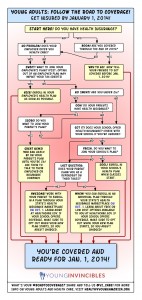
Grace Williams, Business and Social Media Manager
What constitutes accessible and affordable health care has been debated for decades in the United States. In 2010, the Affordable Care Act (ACA or as it is commonly called, ObamaCare) became a law with the goal of putting affordable and accessible health care within everyone’s reach. On October 1 2013, the marketplace for purchasing insurance opened and the countdown to the penalty for not having insurance began.
For the majority of SNU students there will be no change. Healthcare.gov states, “If a [parent’s] plan covers children, they can be added or kept on the health insurance policy until they turn 26 years old. Children can join or remain on a plan even if they are: married, not living with their parents, attending school, not financially dependent on their parents and/or eligible to enroll in their employer’s plan.”
Traditionally, SNU has required students to purchase a school insurance plan if they were not covered by their parents. However, in order to comply with new healthcare regulations the price for the plan increased significantly and now costs $1,523 for the academic year.
Angie Hattler, Registered Nurse from the student health center, said, “This is the first year we have allowed opt outs because of the increased cost. About 80 SNU students opted out.”
These students are now required by law to get a health care plan, unless they qualify for an exemption or hardship. If one meets the following criteria for an exemption he or she can apply for these exemptions through the marketplace on healthcare.gov, which should have applications available later this year, or in some cases on tax forms.
According to healthcare.gov, “You may qualify for an exemption if: you’re uninsured for less than 3 months of the year, the lowest-priced coverage available to you would cost more than 8% of your household income, you don’t have to file a tax return because your income is too low (Learn about the filing limit, [check about table 2 on page 4 and table 3 on page 5]), you’re a member of a federally recognized tribe or eligible for services through an Indian Health Services provider, you’re a member of a recognized health care sharing ministry, you’re a member of a recognized religious sect with religious objections to insurance, including Social Security and Medicare [or] you’re not lawfully present in the U.S.” One may fit the criteria for the various other hardship exemptions that can be found here from healthcare.gov.
If a student qualifies for an exemption, he or she may still be able to buy a catastrophic plan from the marketplace that may have lower premiums but will not cover expenses except for 3 wellness visits and for medical bills over $5,000. The catastrophic plan costs the same for each person regardless of income.
If a student does not qualify for one of these exemptions, then he or she will need to purchase and enroll in a plan by March 31st, 2014 or pay a penalty of whichever amount is higher, $95 or 1% percent of his or her income, for not enrolling in 2014, in addition to the total cost of all healthcare services utilized. The fee will continue increasing every year.
A student needing insurance to escape the penalty can buy an SNU health care plan for the spring semester at $762 and will need to continue buying this plan each semester. More information about this plan can be found here. Stop by and talk to the staff in the health center for complete details.